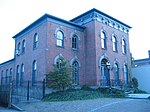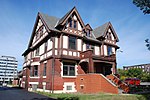Area code 216

Area code 216 is the telephone area code in the North American Numbering Plan (NANP) for the city of Cleveland and most of its inner-ring suburbs in Cuyahoga County of the U.S. state of Ohio. The area code is one of the original North American area codes established in 1947. Unlike Ohio's other area codes that have gone to 10-digit dialling, it's the state's only one where seven-digit dialling is still possible. Despite covering a major urban area, its small size means that such should remain in place at least until 2038 based on current projections. The first nationwide telephone numbering plan of 1947 divided Ohio into four numbering plan areas (NPAs), roughly forming a quadrant layout for telecommunication services in the state. Area code 216 was assigned to the northeastern part, comprising the area from Lorain to Youngstown. In 1996, the southern portion, including Akron, Canton, and Youngstown, received area code 330, while the eastern and western portions were assigned area code 440 in 1997. The boundary between 216 and 440 was drawn in such a way that 440 is barely contiguous; the two portions of 440 are only joined by a small section in the south.
Excerpt from the Wikipedia article Area code 216 (License: CC BY-SA 3.0, Authors, Images).Area code 216
Carnegie Avenue, Cleveland Hough
Geographical coordinates (GPS) Address Nearby Places Show on map
Geographical coordinates (GPS)
| Latitude | Longitude |
|---|---|
| N 41.5 ° | E -81.666666666667 ° |
Address
Dodd Camera and Imaging
Carnegie Avenue
44106 Cleveland, Hough
Ohio, United States
Open on Google Maps









